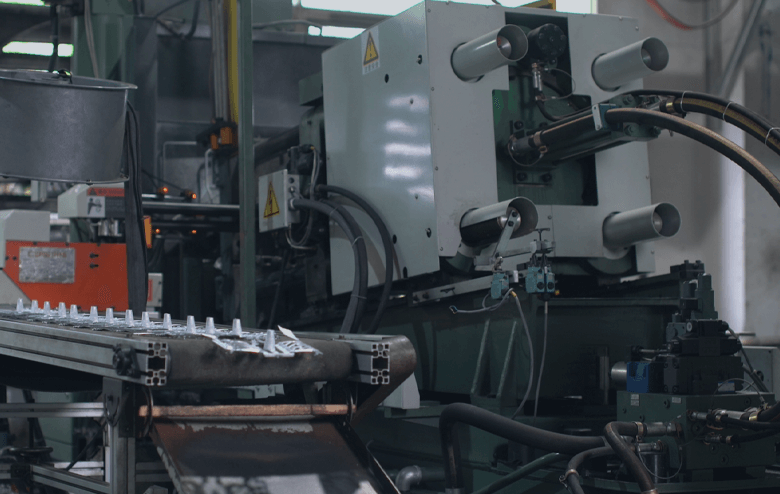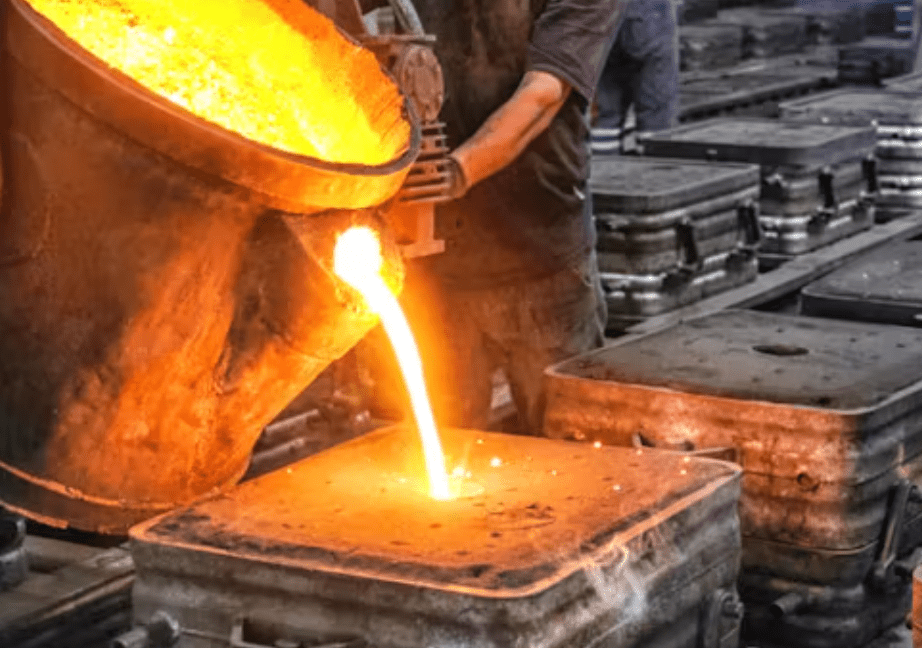When it comes to manufacturing metal parts, there are two common casting method are die casting and sand casting. Each process offers unique advantages and is better suited to different types of projects. Understanding the nuances of each method can significantly impact the quality, cost, and efficiency of your production. This article will explore the main differences between die casting and sand casting, providing you with the insights needed to choose the method that best suits your project's needs.
Die casting is a metal casting process characterized by forcing molten metal under high pressure into a mold cavity. The mold cavity is created using two hardened tool steel dies which have been machined into shape and work similarly to an injection mold during the process. Most die castings are made from non-ferrous metals, specifically zinc, copper, aluminum, magnesium, lead, pewter, and tin-based alloys. Depending on the type of metal being cast, a hot- or cold-chamber machine is used.

Sand casting is one of the oldest and most commonly used types of casting processes. It involves creating a mold from a sand mixture and then pouring the molten metal into this mold. The sand provides the resistance necessary to handle the high temperatures and molten metal. Once the metal has solidified, the sand mold is broken apart to retrieve the cast part, and thus, the mold is destroyed after each use. This process is adaptable to almost all types of metals and can produce very large components.

Die casting has a far quicker production cycle, but preparing the die casting process usually takes longer. Sand casting generally has a faster and less complex setup compared to die casting, but long production cycle, as each mold must be made individually and destroyed after use. So die casting is better suited for high-volume production projects where many identical parts are needed. Sand casting is suited for smaller production runs or for projects where the design of the parts may change between batches.
Die casting uses metal molds, which are typically made from steel or other durable alloys. The high-pressure injection used in die casting allows the molten metal to completely fill the mold, ensuring that all details are captured and resulting in high dimensional accuracy and part integrity. Sand casting uses molds made from sand mixed with a binding agent. These molds are not permanent and can only be used once, which is why sand casting is often preferred for lower-volume or custom projects.
Die casting allows for the production of parts with much thinner walls. In contrast, sand casting generally requires thicker walls, as the sand molds are less precise and robust, making it challenging to maintain dimensional accuracy for small or intricately detailed objects. However, sand casting offers a more forgiving post-casting process, allowing for adjustments and corrections to be made more easily.
Sand casting offers greater flexibility in design, allowing for easy adjustments and the creation of large or uniquely shaped molds, as it can utilize various pattern materials and be easily modified. Conversely, die casting provides superior dimensional accuracy and can produce highly complex designs due to the precision of metal dies under high-pressure injection. However, once a die is made, making design changes in die casting is costly and time-consuming, limiting flexibility compared to sand casting.
The surface finish and tolerances achievable with die casting are generally superior, thanks to the precision molds and the controlled injection process. These characteristics reduce or eliminate the need for post-processing. Sand casting parts often require additional machining and finishing to achieve the desired surface quality and dimensional accuracy, adding to the production time and cost.
The initial setup cost for die casting is significantly higher due to the need for creating durable, precision-engineered dies. However, these costs are offset in the long run when producing large volumes, making die casting more economical at scale. On the other hand, sand casting requires less expensive equipment and materials, making it more cost-effective for limited production runs or when flexibility is more important than speed.
Here’s a table summarizing the differences between die casting and sand casting:
| Aspect | Die Casting | Sand Casting |
|---|---|---|
| Production Efficiency and Volume | Quicker production cycle but longer setup time. Ideal for high-volume production of identical parts. | Faster and simpler setup but slower production cycle, as molds are single-use. Suited for smaller runs or projects with design changes. |
| Materials Used in Molds | Uses durable metal molds, typically made from steel or other alloys. High pressure achieves high dimensional accuracy and part integrity. | Uses non-permanent sand molds mixed with a binding agent. Preferred for lower-volume or custom projects. |
| Wall Thickness | Allows production of parts with thinner walls, offering high precision. | Generally requires thicker walls due to less precise and robust sand molds, but allows for easy post-casting corrections. |
| Flexibility and Complexity of Results | Produces highly complex designs with superior dimensional accuracy but lacks flexibility in design changes once the die is made. | Offers greater flexibility in design adjustments and can create large or uniquely shaped molds. Less precise but more adaptable. |
| Surface Finish and Tolerances | Superior surface finish and tolerances, reducing the need for post-processing. | Often requires additional machining and finishing to meet desired surface quality and accuracy. |
| Cost-Effectiveness | Higher initial setup costs, but more economical at scale for large volumes. | Lower initial costs, making it more cost-effective for limited production runs or flexible design requirements. |
Deciding whether to use die casting or sand casting hinges primarily on the intended use of the product and the scale of production. For projects that demand the creation of small, durable, and precise components, such as medical instruments, die casting is the preferred method. Its ability to produce high-quality, detailed items efficiently makes it ideal for these applications.
Conversely, if your project involves producing large items like truck drums or motor housings, sand casting is the way to go. The size of the molds in sand casting can accommodate the larger dimensions required for such products. Additionally, sand casting is more cost-effective for producing fewer, larger items due to the lower tooling costs and greater mold size capacity.
For those needing to produce a high volume of small to medium-sized objects, die casting offers speed and consistency. If your needs lean towards fewer, medium to large items, then sand casting will better meet your requirements due to its flexibility in mold size and easier setup for large objects.
At HYDieCasting, we specialize in providing top-tier die casting services tailored to meet the precise needs of your projects. Whether you're stepping into the initial phases of production or seeking to optimize your current processes, our team of experts is ready to assist you in choosing the right casting method to ensure the best outcomes.
Contact us today by lily@huayin99.com to learn how our expertise in die casting can elevate the quality and efficiency of your manufacturing efforts. Let's work together to bring your project to success!